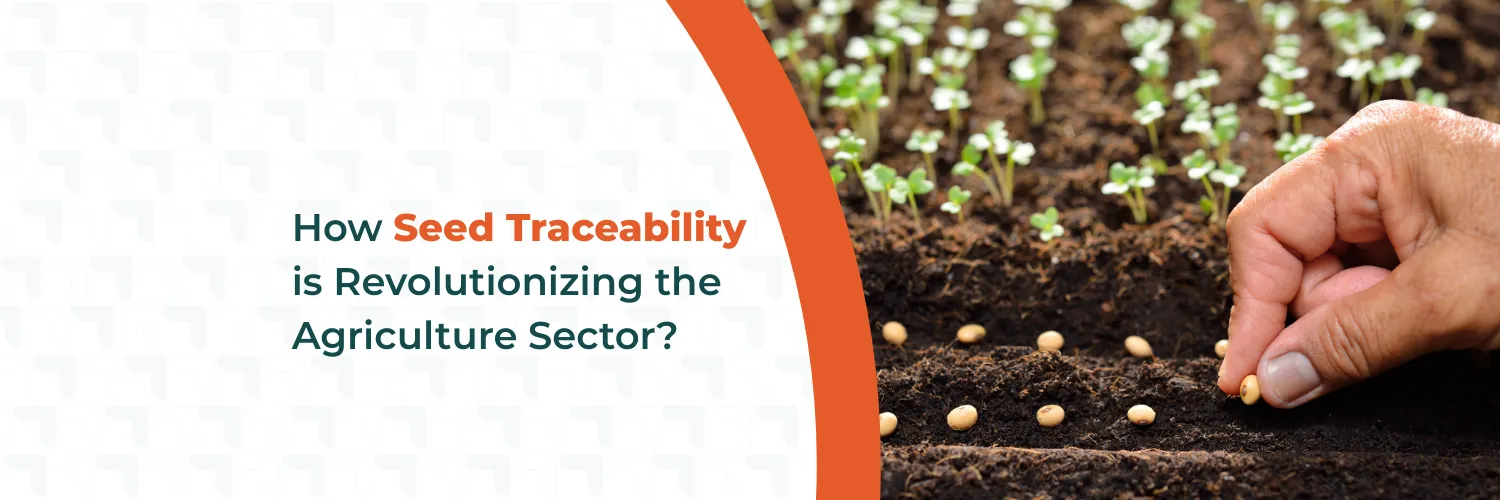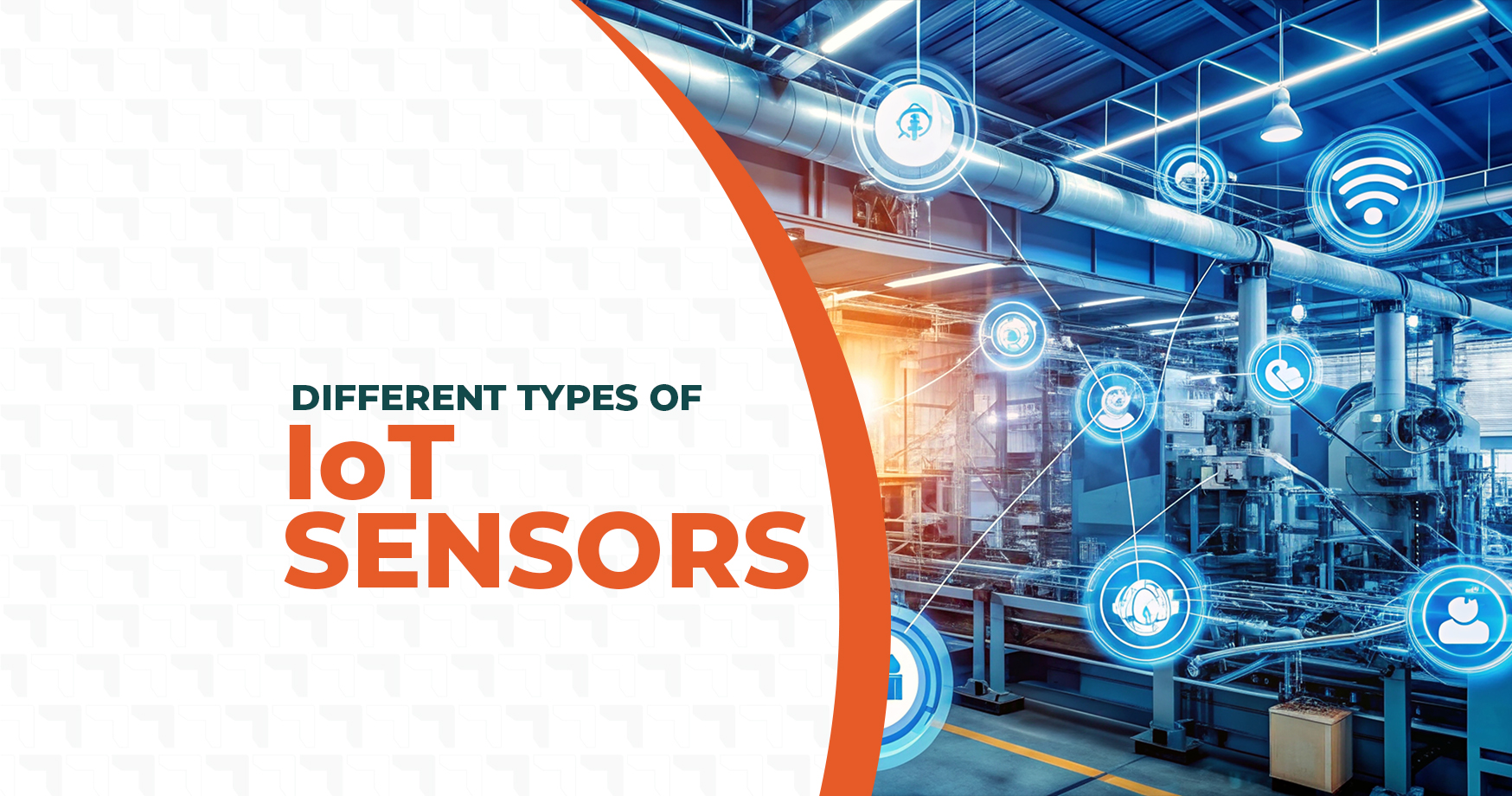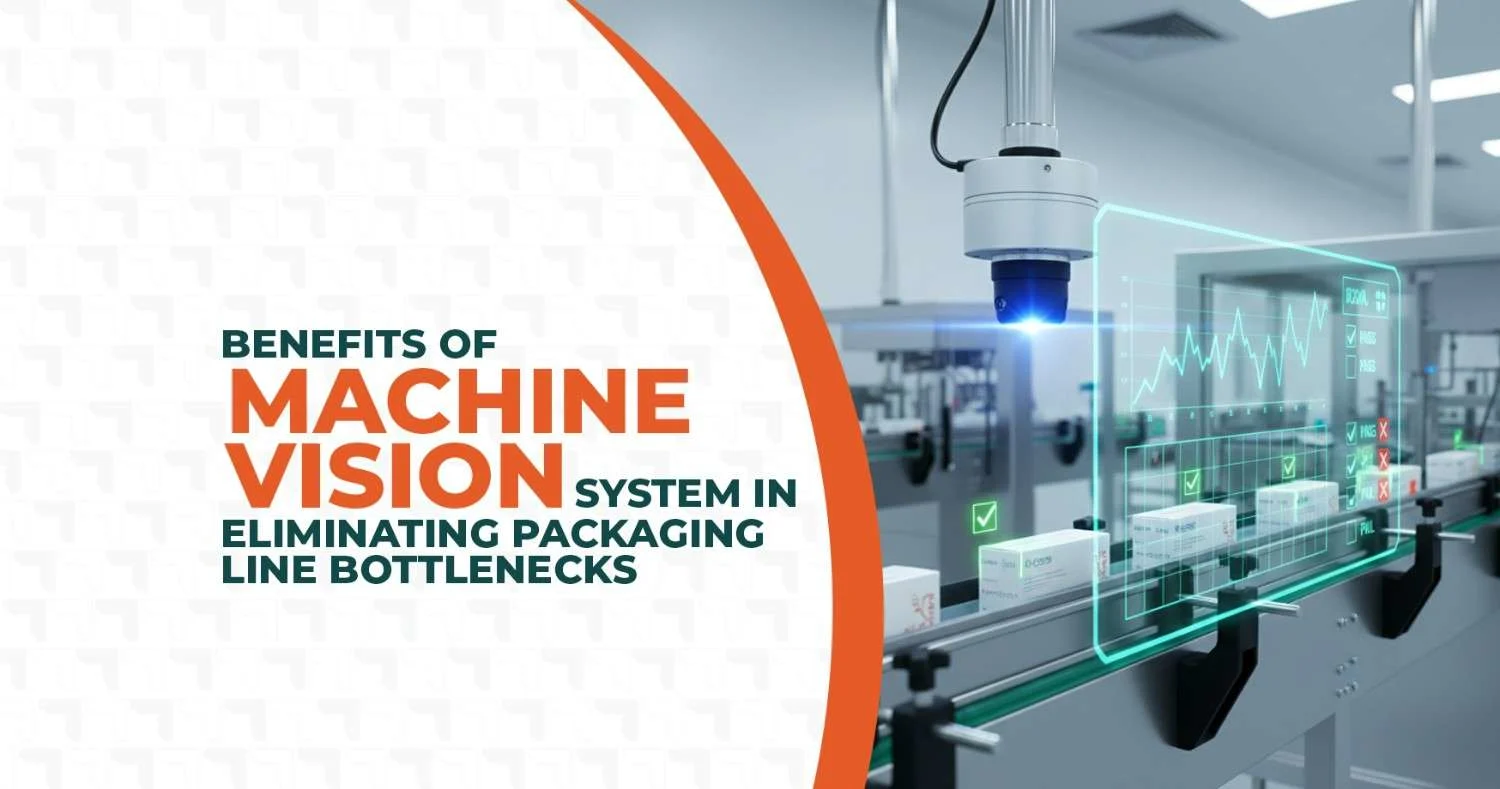
Traceability in Agriculture Sector
Traceability in agriculture simply means being able to track a product through every stage of the farming and supply chain process, right from seeds, growing, harvesting, packaging, to delivery. It helps businesses know exactly where a product came from, how it was handled, and where it is going.
This is important for many reasons, like food safety, regulatory compliance, reducing waste, and building trust with buyers and consumers. For example, seed traceability in agriculture ensures farmers are using certified, high-quality seeds with clear origin and performance data. It prevents the use of fake or low-grade seeds and helps improve crop outcomes.
Today, with growing concerns around quality, contamination, and sustainability, traceability is becoming a must-have. It supports smarter decisions, faster recalls (if needed), and smoother supply chain operations. Read this blog to learn more about the importance of traceability in the agriculture sector and how it works.
What Is Seed Traceability and Why It Matters in Agriculture?
Seed traceability in agriculture refers to the ability to track the journey of agricultural products, from the very beginning (from seed level) to the end consumer (selling harvested crops through distributors).
It covers all stages of the supply chain, including planting, harvesting, storage, processing, packaging, transportation, and distribution.
Fundamentally, it involves gathering and preserving data at each stage of the supply chain. This could contain information about the location and timing of a seed's sowing, the fertilisers or pesticides applied, the dates of harvest, the packaging specifications, the storage environment, and the records of the final delivery.
When we talk about seed traceability in agriculture, it means being able to verify the seed’s origin, quality, and handling practices. This helps ensure that farmers are planting certified seeds that meet the right standards.
Importance of Traceability in Agriculture
Traceability isn’t just a good-to-have; it’s becoming a necessity. With growing demand for food safety, supply chain automation, and regulatory compliance, businesses in the agriculture sector are under pressure to provide clear records of product origin and quality.
If a contamination issue arises, traceability in agriculture allows quick identification of the affected batch, reducing risk and avoiding full-blown recalls. It also supports faster audits, improves inventory handling, and helps prevent counterfeit inputs like low-quality seeds or chemicals.
For global exporters, meeting traceability standards is often a requirement to access premium markets. And for consumers, traceability means transparency. they know where their food is coming from and how it was produced.
From farm to fork, traceability makes agriculture smarter, safer, and more reliable.
How Does Agricultural Traceability Work?
Traceability in agriculture involves creating a networked system that follows produce from the point of origin to the final consumer. It passes through each supply chain touchpoint after beginning at the farm. Let's dissect this procedure, understand the work principle behind it.
1. Data Collection and Tracking
Traceability in agriculture starts with consistent data collection. From the moment seeds are sourced to the time crops reach retail shelves, every step is documented. This is done using technologies like RFID tags, barcodes, and QR codes, tools that help label and track batches in real time.
For example, when applying seed traceability in agriculture, farmers can scan and record seed variety, source, treatment details, and sowing time. As the product moves forward through harvest, storage, packaging, and shipment, these tags or codes are updated with new data. This creates a digital footprint that travels with the product across the supply chain.
2. Supply Chain Visibility
With every step digitally recorded, traceability in agriculture ensures complete visibility across the supply chain. Stakeholders like farmers, processors, distributors, and retailers can access accurate data at any point. This improves coordination, reduces the risk of delays, and makes quality checks much easier.
Seed traceability in agriculture also plays a key role here. It helps identify which seed batch led to which final product, making it easier to assess quality and performance or resolve issues quickly. The result is a more agile, transparent, and accountable supply chain,n one that’s built to respond faster and operate smarter.
3. Role of Blockchain and IoT
Technologies like IoT (Internet of Things) are pushing agricultural traceability to new levels. IoT devices such as smart sensors are used to track changes in light and temperature, and soil monitors continuously collect real-time data from the field or storage units. This allows the entire process of traceability to shift from a manual task to an automated system. As a result, it improves data accuracy, maintains data integrity, and builds greater trust throughout the supply chain.
Benefits of Traceability in Agriculture
Traceability in agriculture acts as a compliance tool. It’s a smart investment in smoother operations, better product quality, and long-term profitability. For farmers, agribusinesses, and supply chain partners, it simplifies work, boosts returns, and builds trust. Let’s learn exactly how it benefits every stakeholder within agriculture
1. Improved Supply Chain Efficiency
Traceability allows farmers to track every movement of their produce from planting to harvesting and shipping. This transparency makes the entire supply chain more streamlined.
With real-time data on stock levels, harvest schedules, and deliveries, farmers can adjust to market needs more quickly. There’s less waiting around, fewer bottlenecks, and a smoother flow of goods. Farmers can reduce delays, optimize transportation routes, and minimize stock shortages.
As a result, they can manage their resources more efficiently, resulting in faster processing, reduced waste, and improved inventory management, all of which contribute to better overall productivity and cost savings. It’s like having a well-oiled machine that runs smoothly without hiccups.
2. Enhanced Food Safety and Quality
Consumers and government agencies have been heavily advocating for safer and cleaner food in today's market. Any quality problems that occur, such as pesticide contamination, improper handling, or spoiling during transit, can be more easily tracked thanks to traceability.
In the event that a batch of produce is discovered to be defective, traceability enables farmers to promptly identify the cause of the issue, whether it be a particular batch of seeds, the state of the soil, or inappropriate storage, so they can address it before it gets worse. This degree of openness safeguards the farm's reputation and helps prevent widespread recalls.
3. Regulatory Compliance
Although regional differences exist in agricultural laws and standards, one thing is always the same: compliance is mandatory. Following these rules is much simpler for farmers when traceability systems are in place. Traceability takes the uncertainty out of everything, right from tracking organic certification to making sure pesticide use is accurately recorded.
Every stage of the farming process is automatically recorded, which allows audits and guarantees proper protocols. Traceability software or systems can also help farmers remain up to date on regulatory changes and avoid expensive fines or delays. Farmers can concentrate on grooming their land instead of being buried in paperwork thanks to this compliance-driven benefit.
4. Increased Market Value
Today’s consumers are more conscious about where their food comes from. They want to know it’s safe, sustainable, and responsibly grown. Having traceability in place means farmers can share detailed product histories, from seed to shelf, building trust and proving the quality of their crops. This transparency can allow farmers to access higher-value markets, such as organic or fair-trade sectors, where consumers are willing to pay a premium for verified, traceable goods. When farmers are able to prove the integrity of their products, they’re not just meeting consumer demands, they’re positioning themselves for better returns, better pricing, and higher market demand.
5. Sustainability and Waste Reduction
Traceability in the supply chain allows producers and distributors to monitor the movement of agricultural products at every stage. By identifying delays, redundancies, or bottlenecks in storage and transport, these systems help reduce spoilage and unnecessary handling. This leads to less product waste and more efficient logistics. Optimised routing and better inventory planning can also reduce fuel consumption and emissions.
The Role of Traceability in the Agricultural Supply Chain
Traceability is a critical element that guarantees every part of the agricultural supply chain operates smoothly and responsibly. From seed selection to the final product reaching consumers, traceability provides full visibility, enables quality control, and holds suppliers and vendors accountable at every step. Let’s learn about how it creates a transparent, well-organized network that benefits all stakeholders - farmers, suppliers, and consumers alike.
1. Seed to Shelf Tracking
Seed-to-shelf tracking is one of the main advantages of agricultural traceability. This implies that every product can be followed along its entire path, from the seed sown in the ground to the packaged produce displayed on store shelves. Through the implementation of a traceability system, farmers can obtain complete insight into the journey of their crops at every stage, making sure that the origin, growth conditions, and handling procedures of each batch are thoroughly documented.
2. Enhanced Quality Control
The foundation of any successful farming operation is quality control. In order to help farmers and producers keep an eye on the quality of their products at every step of the process, traceability is crucial. They can easily monitor the usage of fertilisers, pesticides, and other treatments to make sure they adhere to safety regulations with the help of traceability systems. It can also document the handling, transportation, and storage conditions of products.
It's simpler to locate the issue and take prompt corrective action when quality problems like contamination or spoilage occur. Farmers gain a competitive edge in the market thanks to this proactive approach, which also guarantees that products meet the highest standards while safeguarding consumers' health.
3. Supplier and Vendor Accountability
The foundation of any successful farming operation is quality control. In order to help farmers and producers keep an eye on the quality of their products at every step of the process, traceability is crucial. They can easily monitor the usage of fertilisers, pesticides, and other treatments to make sure they adhere to safety regulations with the help of traceability systems. It can also document the handling, transportation, and storage conditions of products. It's simpler to locate the issue and take prompt corrective action when quality problems like contamination or spoilage occur. This proactive approach gives farmers a competitive advantage in the market and ensures that products meet the highest standards while protecting the health of consumers.
Challenges in Implementing Traceability in Agriculture
Although traceability brings significant advantages to the agriculture industry, its implementation comes with notable challenges. Farmers, producers, and tech providers often encounter barriers such as high costs, complex data management, and reluctance to adopt new systems. Addressing these issues is important in order to fully manifest the benefits of traceability in the agricultural supply chain. Let’s have a look at the most common challenges found in this process:
1. High Implementation Costs
For smaller farms or producers in particular, bringing traceability systems into effect can be a costly endeavour. Setting up infrastructure such as traceability software and hardware like barcode scanners, or RFID devices, can be expensive. To make sure that employees know how to utilize these technologies efficiently, there are additional training costs as well.
The early expenses of traceability might be prohibitive, especially for small-scale enterprises, even though the long-term advantages can yield a strong return on investment (ROI). Without quick, observable benefits, farmers could find it difficult to defend the initial capital outlay. Also, maintaining these systems requires ongoing investment in software updates, hardware repairs, and staff training to keep the technology up to date.
2. Data Management Issues
Traceability generates vast amounts of data at each stage of the agricultural supply chain. From tracking seed origins to monitoring weather patterns and pesticide use, handling this data can quickly become overwhelming. For information to be accurate, available, and useful, data management must be handled appropriately. Adopting advanced technology is necessary for farmers to handle, store, and evaluate data in real time.
Many farmers lack the necessary expertise or resources to handle large data sets, making it difficult to implement traceability in a way that actually improves decision-making. The full potential of traceability systems cannot be achieved without appropriate mechanisms in place to handle and derive valuable insights from the data. Using technologies like cloud computing can effectively help with data management and security.
3. Resistance to Change
Opposition to change is one of the biggest obstacles preventing traceability from being widely used in agriculture. Many farmers and supply chain participants could be reluctant to adopt new technology, particularly if they are not familiar with them. Since traditional farming methods have been used for many generations, it may be considered disruptive to implement new approaches.
The complicated nature of using new technologies or the possibility that they would disrupt their long-standing procedures may worry some farmers. Concerns may also exist over the continuous expenses and upkeep associated with incorporating traceability systems. But clear communication, assistance, and training can overcome this reluctance and demonstrate the long-term advantages and usability of these technologies.
How Agricultural Traceability Prevents Product Recalls
Product recalls in the agricultural sector can be costly and damaging to a brand’s reputation. Traceability systems prevent these recalls by strengthening early problem detection, improving tracking and reporting, and ensuring compliance with regulatory standards. These systems help ensure that, when an issue arises, it is detected early and addressed quickly, minimizing both risk and loss.
1. Early Detection of Quality Issues
Traceability systems' capacity to track goods across the supply chain is one of its fundamental tenets. Data collection from farms, warehouses, and transportation can quickly highlight anomalies like incorrect storage temperatures or pest infestations, triggering an early warning. Identifying problems early reduces the need for large-scale recalls by enabling swift corrective actions, preventing contaminated products from reaching consumers. This preemptive strategy is important for avoiding a minor issue turning into an expensive recall.
2. Improved Tracking and Reporting
Traceability systems allow for real-time tracking and detailed reporting, which accelerates the response when a product recall becomes necessary. In the event of a quality issue or contamination, these systems can pinpoint exactly where affected products are in the supply chain, whether it’s at the farm, in transit, or on store shelves. This granular visibility ensures that the recall process is fast, targeted, and efficient, protecting consumers and preventing the spread of unsafe products. Traceability also makes it easier to communicate with suppliers, customers, and regulatory agencies by giving explicit information about the movement and origins of impacted products.
3. Regulatory Compliance
A traceability system helps agricultural businesses meet government standards and regulations more easily. Many regulatory frameworks around the world require companies to maintain records of the source, handling, and processing of agricultural products. Traceability ensures that businesses can demonstrate full compliance with these laws, especially in the event of a product recall. Farmers and distributors may efficiently demonstrate that their products meet safety regulations by having real-time access to data that describes the complete supply chain path. This helps companies avoid fines and guarantees that they can respond quickly when reporting problems or organising a recall.
Read more about the benefits of track and trace in logistics.
Technologies Enhancing Agricultural Traceability
Modern traceability in agriculture needs an intelligent, responsive system that connects every point in the supply chain. From soil to shelf, technology plays a major role in making traceability faster, smarter, and more reliable. Here’s how various tools and systems contribute to stronger agricultural traceability.
1. Blockchain
Blockchain brings tamper-proof recordkeeping to agriculture. Every stage of the supply chain, right from seed procurement to harvest, packaging, transport, and retail, is recorded on a shared digital ledger. Once the data is logged, it cannot be altered, making it highly trustworthy. This transparency builds confidence among consumers, regulators, and supply chain partners. It also simplifies auditing and makes it easier to verify product claims, such as organic certifications or fair trade sourcing.
2. IoT (Internet of Things)
The IoT technology connects physical devices like sensors, GPS trackers, and climate monitors to the internet. In agriculture, this means real-time updates on everything from temperature during transit to soil moisture levels in the field. IoT devices help track crops and livestock as they move through the supply chain, offering continuous visibility. This helps in maintaining product quality, reducing losses, and optimizing timing, especially during harvesting, storage, and shipping.
3. RFID and Barcodes
Radio-frequency identification (RFID) tags and Barcodes are the workhorses of traceability. They help farmers, suppliers, and retailers tag everything from seed batches to crates of produce, ensuring individual identification at each stage, including aggregation. With a simple scan, information like product origin, packaging date, and movement history can be accessed instantly. RFID technology is particularly useful for high-volume tracking, as they can scan multiple items at once without direct line-of-sight which improves speed, accuracy, and inventory control.
4. AI and Machine Learning
Artificial Intelligence (AI) and Machine Learning (ML) are helping traceability systems with prediction and decision-making. These technologies analyze large volumes of historical and real-time data to forecast potential issues like spoilage risk, logistics delays, or weather impacts. They can even suggest preventive actions, helping farmers and suppliers make smarter decisions. For companies, this translates into improved supply chain durability, decreased waste, and better yield planning.
Future of Traceability in Agriculture
Global innovations, supportive legislation, and technology developments are shaping the future of agricultural traceability. These advancements are improving the agricultural supply chain's reliability, effectiveness, and transparency. Read further to understand what changes are occurring in the current market:
1. Adoption of Smart Farming Techniques
Smart farming integrates technologies like Artificial Intelligence (AI), automation, and predictive modeling to optimize agricultural practices. AI analyzes vast datasets to predict crop yields, detect diseases early, and recommend optimal planting times. Automation, including the use of drones and autonomous tractors, simplifies tasks such as planting and harvesting. Predictive modeling aids in anticipating weather patterns and pest infestations, allowing for proactive measures. These technologies collectively fortify traceability in agriculture by providing real-time data and insights into every stage of the farming process.
2. Global Trends and Innovations
Globally, as advanced technologies are adopted, agricultural traceability is changing its course. To guarantee data integrity and transparency in the supply chain, nations are putting blockchain into practice. Logistics and crop conditions may be tracked in real time because of the Internet of Things (IoT). Demand forecasting and effective inventory management are being accomplished through the application of machine learning algorithms. These developments are guaranteeing food safety, establishing new benchmarks for traceability, and satisfying consumer demands for openness.
3. Policy and Government Support in India
In India, government initiatives are playing a crucial role in promoting agricultural traceability. Programs under the Digital Agriculture Mission aim to integrate technology into farming practices, enhancing productivity and transparency. The establishment of traceability systems is being supported by policies that will increase export potential and guarantee adherence to global standards. Adoption of traceability systems is being encouraged by government support, which benefits farmers and the agriculture industry as a whole.
Conclusion
Traceability in agriculture is a technological upgrade that provides a smarter way to farm, trade, and grow. It guarantees improved accountability, safety, and transparency by monitoring each stage of the supply chain, from seed traceability in agriculture to the last delivery.
For farmers, it translates into improved return on investment, faster decision-making, and more control over operations. And it also gives companies new access to premium markets, increases consumer trust, and guarantees compliance.
If you are ready to transform your agri-supply chain and scale your business by several notches, rely on our track and trace solutions for better results in your bottom line. Contact us today to learn more.
FAQs
1. What is agricultural traceability?
It's the ability to document, monitor, and confirm each stage of the farming process, from sowing seeds to transporting food to store shelves.
2. Why is traceability important in agriculture?
Traceability in agriculture helps decrease errors, maintain quality, satisfy legal criteria, and reassure customers about the origin and safety of products by connecting each step in the production process.
3. How does blockchain improve agricultural traceability?
Blockchain creates a tamper-proof ledger of seed certification, inspection, and distribution records. Smart contracts automate compliance and payments, while decentralized access ensures transparency among stakeholders. This eliminates counterfeiting, accelerates recalls, and enhances regulatory trust.
4. What are the main challenges of traceability in agriculture?
Key challenges include high setup costs, poor rural connectivity, and lack of standardized data formats. Farmers face interoperability issues between legacy and modern systems, complex setup requirements, and variable global regulations. Overcoming these barriers requires scalable, low-cost, cloud-native solutions and flexible frameworks adaptable to diverse agricultural ecosystems.
5. How can Indian farmers adopt traceability solutions?
Indian farmers will adopt traceability solutions through different channels like mobile-friendly apps, basic tagging tools, support from FPOs, and government-led programs focused on digital farming and market access improvements.
6. What are the key components of a traceability system in agriculture?
A modern seed traceability system uses serialization, batch coding, and product genealogy to track every seed unit from source to farmer. Integrated with digital certification and compliance modules, it enables bidirectional traceability, automated recall, and end-to-end visibility—ensuring quality, transparency, and regulatory assurance across the entire seed supply chain.
7. How does IoT enable real-time monitoring in agricultural traceability (seed logistics and storage)?
IoT devices, such as RFID tags and environmental sensors, track seed movement, storage conditions, and stock levels in real time. Data on temperature, humidity, and transit routes is automatically captured and analyzed for quality assurance. This connectivity supports predictive alerts, reduces spoilage, and strengthens traceability from production to retail.
8. What is the future of traceability in sustainable agriculture (seed traceability innovation)?
Future systems will integrate AI-driven forecasting, digital twins, and DNA tagging for precise authentication and risk prediction. Cloud-based traceability platforms will simplify adoption for small seed enterprises. Enhanced interoperability, smart contract–based transactions, and sustainability analytics will make seed supply chains more transparent, efficient, and environmentally accountable under evolving BCI frameworks.
Share this page
Get in Touch
Ready to take your business to the next level with BCI (Bar Code India)? We're just a phone call or email away.



